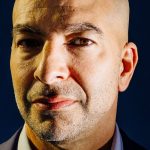In our recent webinar, we were joined by Mark Chester, assistant director at University Hospitals of Derby and Burton (UHDB) and Georgina Hurst from BridgeHead Software, for a presentation on the challenges of legacy applications. They discussed the problems attached to obsolete and inefficient storage systems, as well as the tangible benefits BridgeHead’s HealthStore can provide.
What are legacy applications?
Georgina began by establishing some of the context around legacy applications. She explained that legacy applications are often understood to be obsolete or outdated systems; but they can also be duplicate systems resulting from a merger or acquisition, or systems that are being replaced by newer applications.
“Legacy applications are systems that no longer sit in production,” Georgina said. “They don’t create or accept new data, but they are being retained and maintained. The data is not easy to access; however, these systems are still being kept alive. They are found everywhere across a broad range of services and there is no cohesion as they are all siloed.”
For example, one hospital that BridgeHead have spoken to recently told them about what they termed their ‘feral 500’. “That’s 500 legacy applications that they continue to operate and support, and which contain clinical patient data that is rarely being accessed.”
The problem
Georgina provided some facts from an NCC survey, which highlighted that more than 50 percent of applications are legacy in typical enterprise portfolios. Two out of three CIOs say that their organisations do not have a single view of legacy system data, and in terms of IT budget allocations, 70 percent of the budget is spent on maintaining existing systems.
“If they are not providing the level of efficiency required and can be made obsolete, the consideration to retire these applications becomes more interesting,” Georgina pointed out.
She noted that the Frontline Digitisation programme aims to accelerate the uptake of the foundational technology that is needed to underpin digital transformation, focusing on EPR maturity through the procurement and/or implementation of first generation and second generation EPR.
“The issue with frontline digitisation is that typically only about two years of data will be migrated from an older EPR or best of breed solutions into a new EPR. The rest is left in limbo or in read-only mode. Other factors to consider include license maintenance, support, and staff costs for running these legacy EPRs. You’re effectively paying for two EPRs, your new one and your old one,” Georgina said.
As part of the diagnostic modernisation, she added, interoperability and data sharing becomes very important. “Being able to access this data quickly, safely, efficiently, and at the point of need is a fundamental requirement for ensuring positive patient outcomes.”
She also touched on the key drivers for retiring legacy applications, which include reducing costs, reducing operational overhead, improving safety and improving access to data. “As applications age, they become increasingly vulnerable to cyber attacks and data breaches – a high number of security breaches occur in outdated, unsupported systems,” Georgina explained.
“The costs associated with managing these systems becomes really untenable – thinking about the licensing, support, storage, server room space as well as the necessary staff and skills needed to maintain these systems. It is also important to consider sustainability and the ecological impact of having these data centres running. These factors can all be mitigated using the correct software.”
BridgeHead and UHDB
Mark took over at this point to discuss how BridgeHead has supported UHDB.
Firstly, he provided some background information on UHDB. They are comprised of two acute trusts, three community hospitals and are listed as the eighth busiest trust in England.
“The biggest problem we faced is that we are one trust with two EPR systems,” Mark noted. A number of their sites predominantly use Lorenzo EPR; others use a MEDITECH EPR. They are in the process of moving towards a single EPR system by 2024/25. Mark raised a key point around the price of doing nothing, pointing out the huge organisational implications in maintaining archaic systems, both from a financial and a practical safety perspective. Not only is it extremely costly to maintain these essentially redundant systems, but in terms of governance, this poses a threat to the safety of classified data which could potentially violate corporate guidelines and best practice.
“By the end of 2021, we started looking for a way to combine our data into a single system which would be highly accessible, safe and which we could rely on going forward to meet the needs of the trust,” he explained. “The system was also cloud-based, which meant it could grow with the trust’s requirements.”
Mark went on to provide some graphics conveying the technical design of the software, which can be viewed at 15:22, including an example of a patient discharge letter from ICM within the new data archive solution.
Georgina came back to discuss BridgeHead’s HealthStore, a clinical data repository and registry, in more detail.
She said: “If you think about it as a data management workflow, HealthStore is the central clinical data repository that facilitates the migration of data from any source application into HealthStore – where it is then protected, stored and made available for viewing. It provides interfaces to other systems using our FHIR and HL7 interoperability standards. HealthStore can be deployed on premise, as a hybrid or in the cloud as Mark mentioned, of which we support all variations. If you think about HealthStore as a clinical data repository which sits alongside your main system, in the case of Derby and Burton this is the EPR.”
Georgina then gave a recap on the benefits of BridgeHead’s HealthStore system, emphasising that it can store, protect and centralise all data; provide better continuity of care through creating one extended 360-degree view of complete medical history; support clinical workflows by reducing the need to log into multiple systems; reduce system vulnerabilities; and reduce or eliminate costly legacy systems.
Looking at their plans going forwards, Mark said: “A new project we will be starting over the next few months will involve archiving data from our old laboratory system. This system has been used for a number of years within both UHDB and Chesterfield Royal Hospital; the plan is to migrate data from pathology services from each trust, and combine them into one single view platform, allowing clinicians from both hospitals to access and view information from a secure shared source.”
We then opened the floor to questions from our audience at 22:23.





